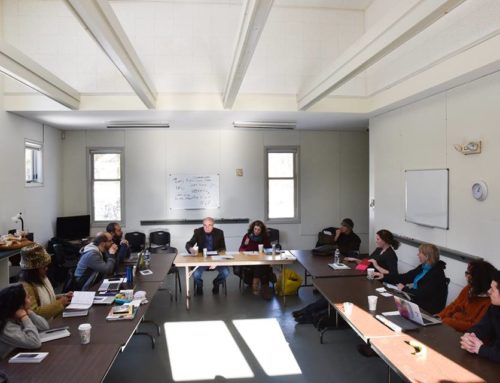There are writers I work with who have shared with me that they often write their first drafts out of order–initially writing scenes that take place at various places in their unfolding story. They say that this gets them warmed up and connects them with the material they’re working with, discovering the tone of the piece as well as getting a better bead on the principle characters and their voices.
My contention is that there are lurking dangers when you take this approach to your first draft. Here are a few of them:
–There’s a tendency to fall in love with key scenes you’ve written early that take place deep into the unfolding story. And it’s often very difficult to toss these pages out when you finally get to where those scenes belong in your plot even though they no longer really fit. Many new discoveries have been made as your draft has taken shape and mostly likely scenes are now obsolete to one degree or another.
–There’s a ripple effect operating as you write your first draft, meaning that one thing builds on another and many slight and not so slight adjustments in voice and behavior naturally occur as you work your way through your script. But this can only be to your advantage if you write your draft from beginning to end. Otherwise it’s short circuited and you never allow this organic growth to happen as you work your way through, especially as you try to squeeze in that scene that you wrote too soon–a scene that most likely is void of many of the discoveries you’ve made along the way.
–Another aspect of the ripple effect is the subtle and not so subtle changes that occur in the actual plot of your story as you work through its telling from start to finish, incorporating the cumulative discoveries you’ve made along the way. And that beautiful scene you wrote out of order will no longer quite fit. And if you’ve fallen in love with the scene, there’s the strong temptation to still try to force it in there–like trying to put a square peg into a round hole. And this can be the death-knell to your script.
–In a sense, writing a draft out of order is the lazy approach to tackling your draft. By this I mean it tends to indicate that you’ve been in too big a hurry to get into the actual writing of the script and haven’t had the patience to do the essential extensive pre-draft character work–digging into backstories and exploring the nine-tenths of your tale that’s going to forever remain under the surface in the subtext. These critical discoveries don’t happen by initially writing a scene that takes place deep into your script because you don’t know who your people are or have a sense of the subtleties of personalities and relationships that will have evolved by that point in your story.
So the message here? When you’re ready to go to draft, start on page one.
* * * *
I’m also a playwright and screenwriter, producing partner in my production company Either/Or Films (The Sensation of Sight and Only Daughter) a professional script consultant, and the author of The Playwright’s Process. You can follow me on Twitter @eitherorfilms or @mfastagescreen. I’m also on Facebook at buzzmclaughlinscriptconsulting.







Leave A Comment